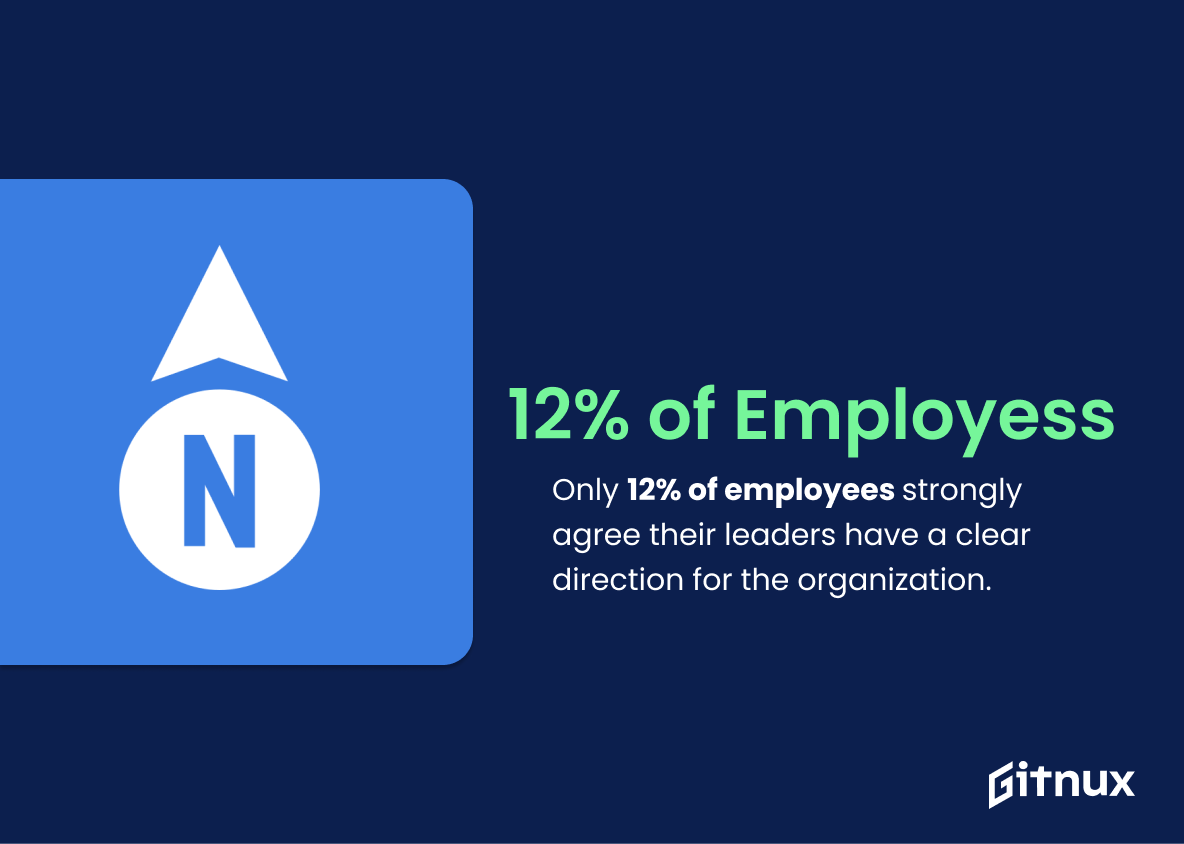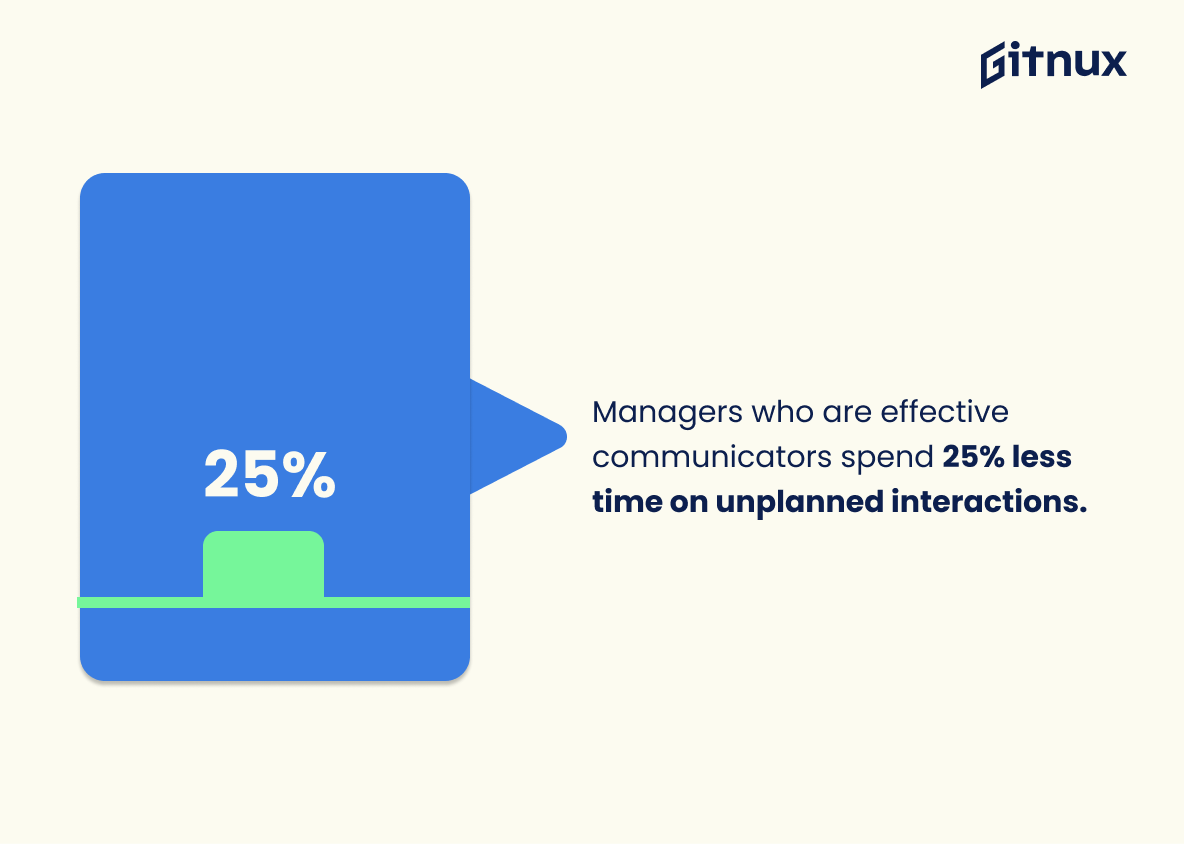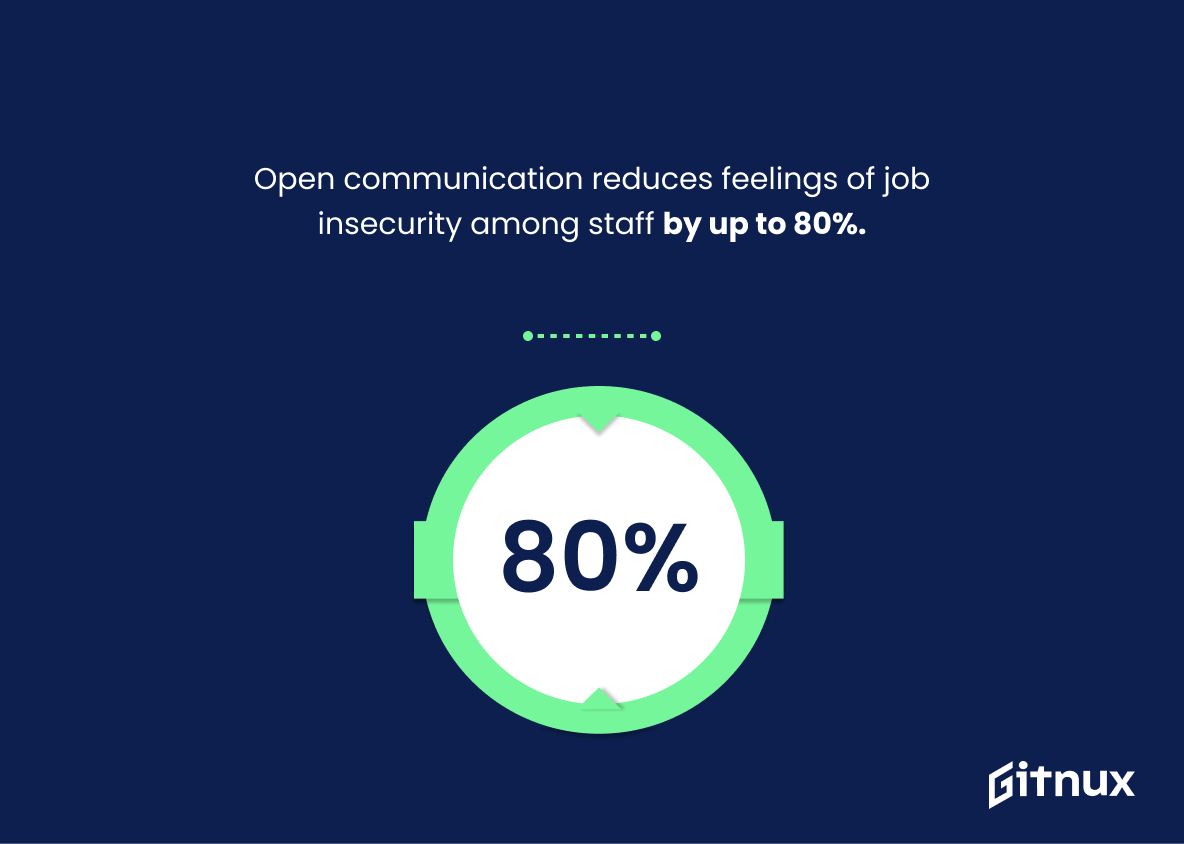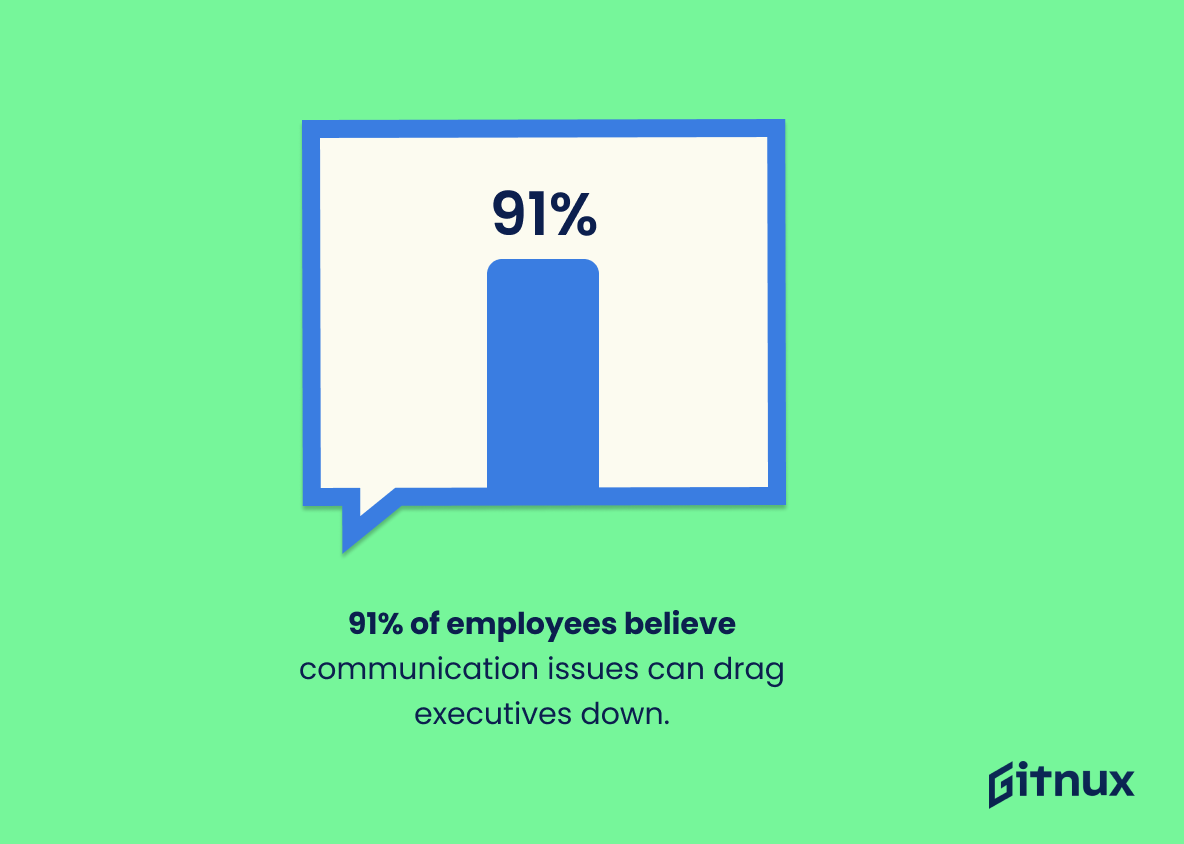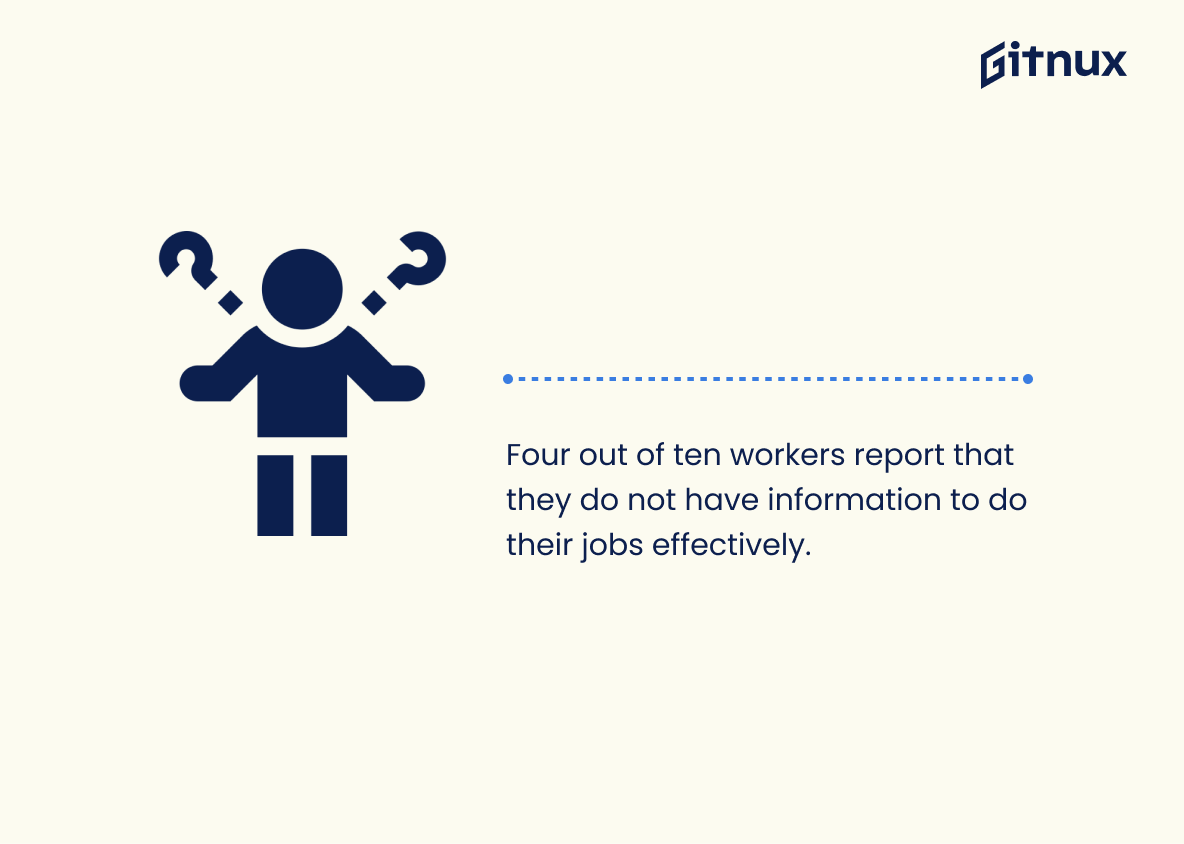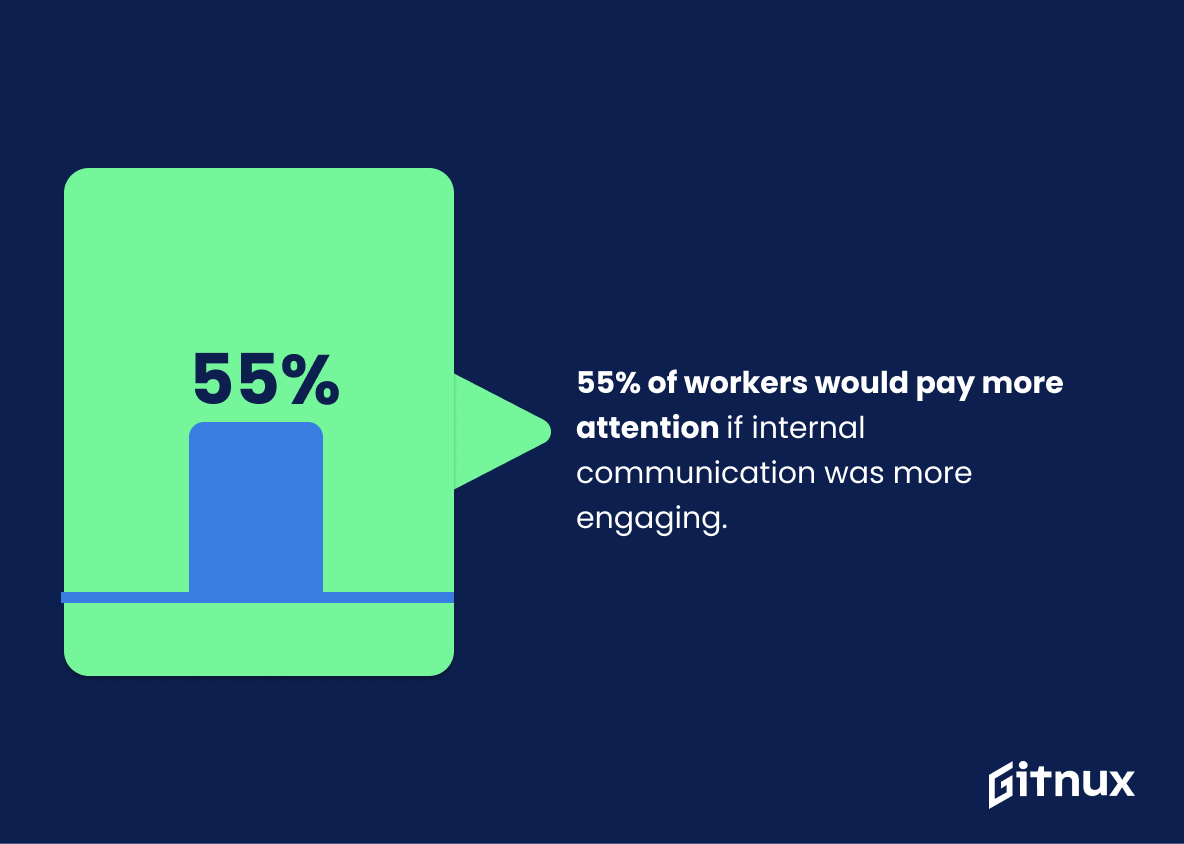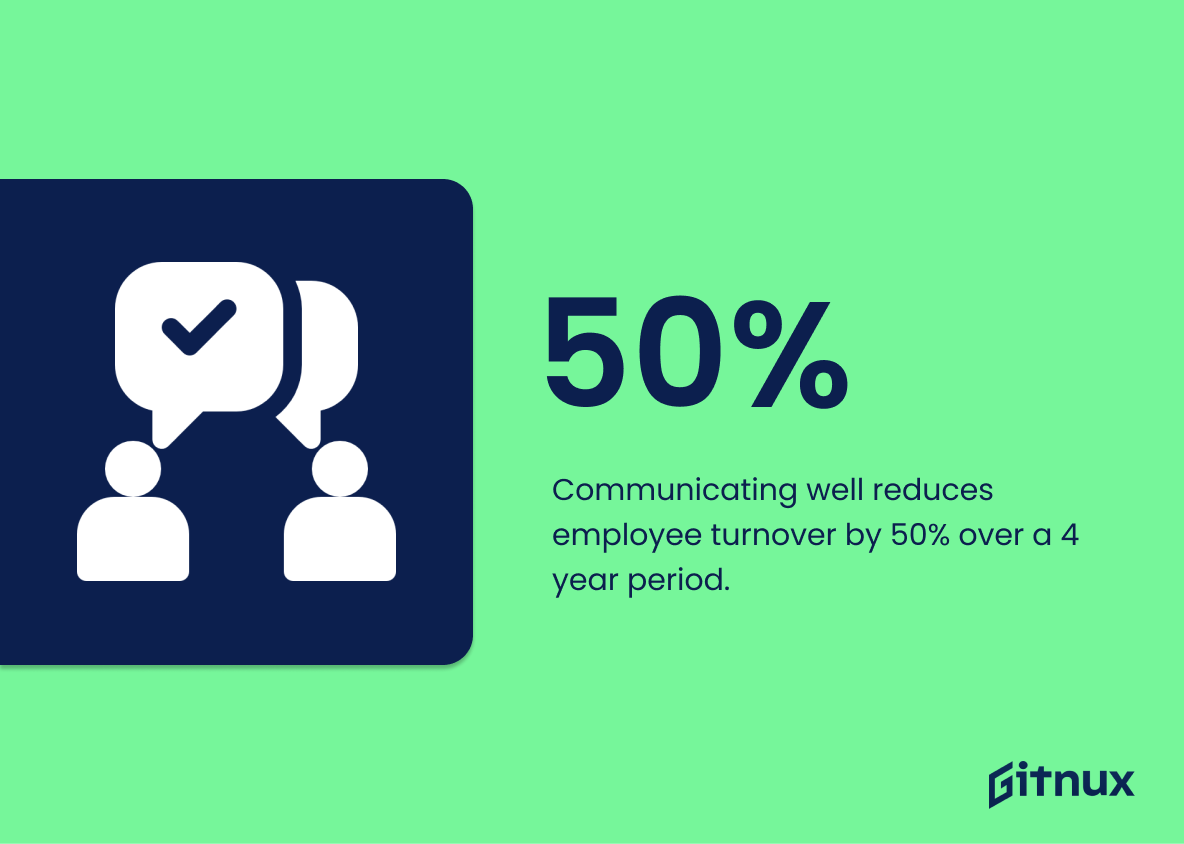Effective communication is a critical skill in both personal and professional environments. However, have you ever wondered how significant its role is? Or how data-driven insights could help optimize your communication strategies? Dive into a world where numbers speak as loudly as words. Welcome to our blog post that throws light on crucial Effective Communication Statistics.
This post is a trove of enlightening data and surprising facts that will change your perspective on the scope and impact of effective communication within businesses, relationships, and the challenging landscape of the digital age. So buckle up, and embark on this exciting journey to unravelling the power rationales behind successful dialogues and engagements.
The Latest Effective Communication Statistics Unveiled
Only 12% of employees strongly agree their leaders have a clear direction for the organization.
Painting an intriguing picture of the state of effective communication in organizations, the statistic reveals a surprisingly low percentage – merely 12% of employees passionately concur that their leaders have a distinct path mapped out for their organization. This aligns with the key theme of the write-up, emphasizing how vital successful communication is in a leadership role. It underscores the correlation between the leader’s ability to set clear, understood goals and the workforce’s perception of the organization’s trajectory.
If such communication lapses persist, it could spiral into reduced morale, declining productivity, and a host of other internal issues. Thus, this statistic serves as a striking reminder for those occupying leadership positions to continually hone their communication skills, and for those interested in organizational dynamics, it provides a window into the tangible impact of effective communication.
86% of employees and executives cite lack of collaboration or ineffective communication for workplace failures.
In the realm of effective communication statistics, this particular nugget of insight shouldn’t be glossed over lightly. Diving beneath those numbers, it reveals an alarming trend: a staggering 86% of employees and executives identify a lack of collaboration or ineffective communication as the culprit behind workplace failures. This does not simply leave a bitter taste for these individuals, but it impacts an organization’s productivity and overall growth potential.
In the bigger picture, it encourages a renewed focus on strengthening internal communication strategies. By improving this, organizations can reverse this bleak trend thus enhancing productivity and cultivating a harmonious working environment. In a world where clear communication is the cornerstone of a successful organization, this statistic rings a deafening bell, calling all to join the revolution of effective dialogue in the workplace.
97% of employees and executives believe lack of alignment within a team impacts the outcome of a task or project.
Shedding light on the critical role of team dynamics, this riveting statistic asserts that an astounding 97% of employees and executives attribute the success or failure of a task or project to the degree of alignment within a team. The figure underlines the significance of seamless communication conduit in cultivating an environment of mutual understanding and collaboration amidst diversity. It serves as a persuasive call to action within the sphere of effective communication, encouraging managers and team leaders to foster a culture of clear, concise, and open dialogue.
This statistic provides compelling evidence, illustrating how the ripple effects of a lack, or breakdown, of communication can gravely impact the outcomes of shared objectives. It amplifies the assertion that for a team to sail smoothly towards desired goals, their compass must consistently point out the same direction, a task only achievable through effective communication.
Managers who are effective communicators spend 25% less time on unplanned interactions.
Drawing light upon the true significance of this fascinating statistic, it essentially illustrates how the art of effective communication can be a game-changer for managers in their day-to-day professional lives. The fact that proficient communicators can reduce their time spent on unplanned interactions by a considerable 25%, inherently points towards a boosted managerial efficiency.
Why is this pivotal, you may ask? Well, imagine harnessing this saved time to channelize towards strategic planning, team development, or essential administrative tasks. This means creating room for actions pointing towards business growth and personal progress. Moreover, it implies that effective communication eliminates misunderstandings, preventing the need for innumerous follow-up discussions or explanations – the common time guzzlers in a corporate environment.
So, as we unravel communication skills under the managerial lens, we realize how it’s not just about transmitting information, but also about saving time – a valuable resource in the fast-paced corporate world today. This particular statistic resonates on a much deeper level demonstrating how inculcating effective communication skills can architect the road for superior management enhancing overall productivity.
Open communication reduces feelings of job insecurity among staff by up to 80%.
From a perspective of relevance and potency, let’s unpack the vast implications of the statistic ‘Open communication reduces feelings of job insecurity amongst staff by up to 80%.’ This statistic is a powerful beacon in the information ocean, exposing the transformative potential of effective communication within a work setting.
Under the spotlight of this impressive figure, a picture of a harmonious and secure workplace starts to take shape. Not just a cipher or a percentage, it punctuates the importance of fostering an atmosphere of open dialogue, contributing to the sense of job security and, ultimately, fortifying the bridge to enhanced productivity.
Imagine reducing your workforce’s anxiety and fostering their dedication by the sheer power of speech. This number is evidence that dissecting the multitude of ways to improve communication won’t be in vain. On the contrary, it’s likely to be the hand that quilts together the fabric of a resilient and engaged team. Viewing this statistic as a roadmap hence leads to a destination where a business thrives on the bedrock of openness, reducing job insecurity, and enhancing overall efficiency, which is, indeed, the major essence of a blog post centered on ‘Effective Communication Statistics’.
57% of employees say they’re not given clear directions.
Spotlighting an alarming figure such as “57% of employees feel they lack clear direction,” underscores an urgent communication gap in the professional realm. Within the framework of a blog post on Effective Communication Statistics, this statistic layers the narrative with a stark reality check, amplifying the gravity of miscommunication.
It’s a silent alarm, hinting at the massive, untapped potential residing in offices worldwide which, if guided accurately, could significantly hike productivity and job satisfaction. In no subtle terms, it echoes that the power and necessity of clear, concise, and effective communication cannot be sidelined.
91% of employees believe communication issues can drag executives down.
Diving into the sea of effective communication, a startling reality surfaces that a striking 91% of employees believe the lead weights of communication issues can sink the ship of executive success. This prodigious statistic is more than a number; it’s an important beacon in the blog post about Effective Communication Statistics, calling attention to the tremendous impact communication failure can have at the helm of professional leadership.
It underscores the importance of crafting crystal-clear messages, facilitating open dialogue, and cultivating understanding within a team – for if neglected, these missing links in communication can compromise executive efficiency and effectiveness. So, armed with this revelation, executives and managers can adopt and implement effective communication strategies, dodge the iceberg of communication blunders, and navigate their organizations towards the shores of success.
Four out of ten workers report that they do not have information to do their jobs effectively.
Alternately viewed, 40% of the workforce indicates a lack of necessary information for optimal job performance, echoing a silent cry for effective communication. Wrapped in this figure, we unearth the compelling narrative of how information scarcity can hamper productivity and overall work output. In a blog post dissecting Effective Communication Statistics, this startling statistic serves as a stark testament to the crucial role of robust and clear communication channels within any organizational context.
Without requiring any intricate mathematical calculation, it gives quantitative backing to the argument that the quality of information relayed and retrieved at a workplace directly impacts operational efficiency. It underscores an organization’s need to transcend barriers of miscommunication, fostering a conducive atmosphere of information exchange essential for seamless operations and amplified productivity.
55% of workers would pay more attention if internal communication was more engaging.
Delving into the world of effective communication, one cannot turn a blind eye to the striking observation that ‘55% of workers would pay more attention if internal communication was more engaging.’ It’s like a red flashing light, alerting the need for engaging communication techniques. This statistic proves to be the heartbeat of a blog post on Effective Communication Statistics, underscoring just how pivotal the role of engaging interactions is in capturing and retaining the attention of employees.
It vividly paints a picture of a world where over half of employees are not as receptive or responsive simply because the mode of conveying internal messages isn’t appealing enough for them. This, consequently, urges the need to revamp communication strategies, craft more riveting messages, aim for interactive dialogues and replace dullness with dynamism. At its core, this statistic drives home the power and indispensability of effective internal communication in stimulating productivity and enhancing employee engagement and satisfaction.
Millennials prefer communication through text instead of a phone call or in-person meeting, according to 75% of the 233 millennials surveyed.
Unearthing the preferences of millennials, a whopping 75% of the 233 surveyed leaned towards text as their favored communication style. This insight can be a game-changer for tapping into the potential of this youthful and tech-savvy population.
It allows firms, managers, and colleagues alike to design communication channels that resonate well with this demographic, thereby fostering stronger engagement and improved productivity. Additionally, as bloggers strategize their outreach efforts, this statistic can guide them to optimize their engagement tools for successful interaction with a significant portion of the digital native population.
Communicating well reduces employee turnover by 50% over a 4 year period.
Framing this vital statistic within the universe of effective communication points a spotlight on the profound impact of proficient conversation in the corporate world. Drilling down further, it unveils that polished communication has the potency to slash employee attrition rates by a whopping 50% over a span of four years. This revelation is a gold mine for companies challenged by high employee departure rates, as it reinforces the importance of fostering a culture of clear and constructive dialogues.
It empowers organizations to recalibrate their communication strategies, ensuring a consistent message through all levels of the organization that aligns with the overall company vision. Thus, such an impactful statistic deserves to be the centerpiece of any argument advocating the critical need for effective communication.
Conclusion
In today’s rapidly evolving digital landscape, effective communication has never been more essential. The statistics clearly underscore the importance and impact it holds in various aspects of our lives – from building stronger relationships to escalating business growth. Mastering this skill can significantly influence our personal and professional achievements.
Through understanding these effective communication statistics, we can better navigate our conversations and connections in an increasingly interconnected world. Ultimately, the data serves as a compelling reminder of the power of communication and the ways it can drive success and satisfaction, both personally and professionally. Invest time in honing this skill and the benefits will be invaluable.
References
0. – https://www.blog.bananatag.com
1. – https://www.www.businesswire.com
2. – https://www.www.salesforce.com
3. – https://www.www.aboutpeople.com
4. – https://www.www.impactbnd.com
5. – https://www.fleep.io
6. – https://www.insights.humancapital.aon.com
7. – https://www.www.entrepreneur.com
8. – https://www.www.gallup.com
9. – https://www.learn.g2.com
10. – https://www.www.axerosolutions.com
